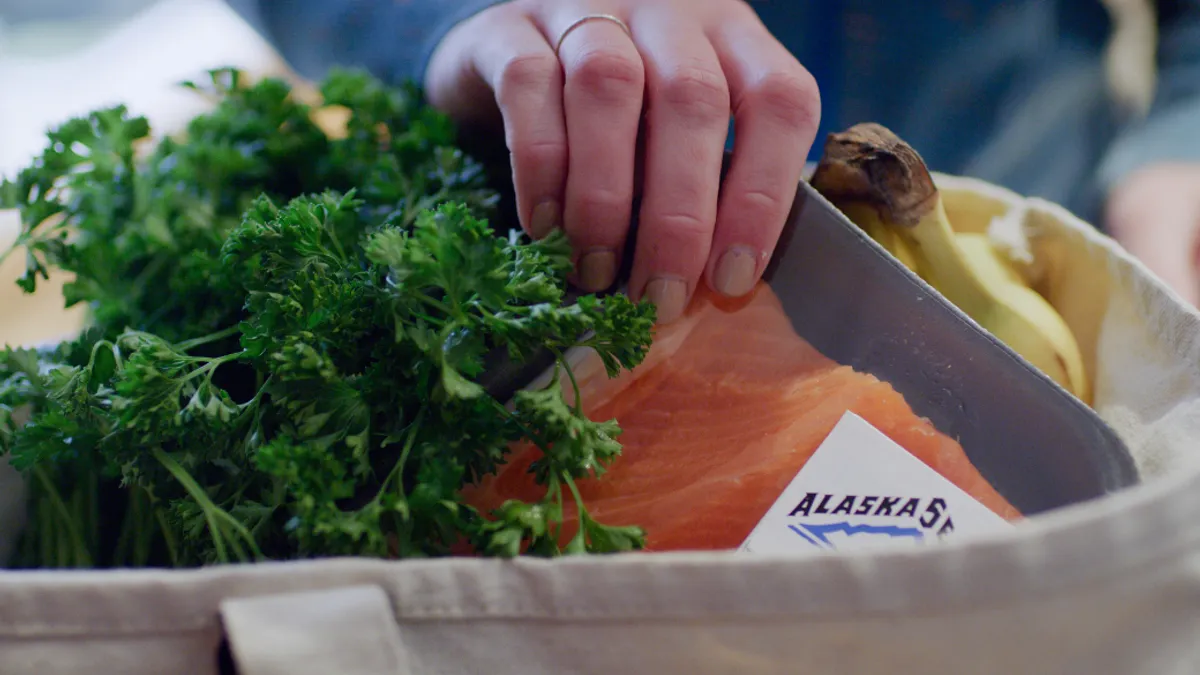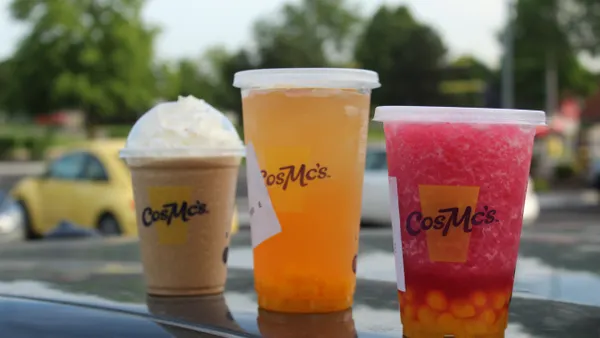Restaurant operators can leverage consumers’ growing interest in seafood by appealing to younger consumers in particular and emphasizing the sustainability and origin of the seafood items on their menus.
“There are new attitudes and behaviors emerging, and you can see big differences when you look at it generationally,” says Wade Hanson, Senior Principal, Advisory Practice, Technomic, which recently compiled a report on seafood consumption trends in the restaurant industry, in partnership with the Alaska Seafood Marketing Institute.
The report highlights the need for operators to rethink their seafood strategies around the preferences of millennials in particular, Hanson says. These consumers, between the ages of 32 and 47, are in their prime restaurant-spending years, and have much different attitudes toward seafood than older consumers, he explains.
“They are the generation that is most interested in seafood these days, largely because of freshness, health and sustainability,” says Hanson. “The industry needs to play to those millennial interests, and not get too caught up in what older generations of consumers think.”
Nearly a third of millennials (31%) say they have increased their seafood consumption vs. two years ago, according to the Technomic report. In addition, 29% of Gen Z — the next cohort of consumers behind millennials — have also done so. This compares with only 18% of older consumers.
Attitudes around affordability
Another key difference among younger consumers is their attitude around the affordability of seafood in foodservice venues, according to the Technomic research. Many older consumers perceive seafood dishes as being relatively expensive, but Gen Z and millennial consumers have seen a lot of price volatility for other proteins in recent years, and have come to expect seafood to be more affordable.
Those attitudes are reflected in the research, which shows that 36% of millennials and 31% of Gen Z consumers consider seafood to be more affordable than beef, chicken or pork, while only 9% of older consumers hold that perception.
The research also highlights other opportunities for incorporating more seafood into foodservice offerings, such as for the breakfast and lunch dayparts, and opportunities to expand seafood offerings within specific foodservice segments.
More than half of millennials — 52% — report that they are likely or very likely to purchase seafood dishes for breakfast, followed closely by 45% of Gen Z consumers who are interested in seafood dishes during the breakfast daypart. That compares with only 9% of older consumers who are interested in seafood as a viable breakfast option.
Limited-service restaurants in particular have an opportunity to innovate with new seafood menu items, Hanson says.
“They want different species, they want different flavor profiles, and they'll be willing to spend for that,” he says. “If you’re a limited-service operator, whether a chain or an independent, think about what else you do that’s relatively affordable, and that can bring a little bit of excitement into portable fish and seafood dishes.”
Seafood as an alternative protein
Consumers have varied reasons for cutting back on red meat consumption, including concerns about their own health and concerns about the environment. Whatever their reason for choosing to eat less red meat, seafood — and in particular wild-caught seafood from Alaska — provides a viable alternative.
Thirty-eight percent of seafood consumers say replacing meat with seafood is the most appealing way to reduce meat consumption, the report found, while only 18% cited replacing meat with vegetables.
“Fish and seafood often address those very same things that plant-based alternative proteins provide,” says Hanson. “I think there’s an opportunity for operators to capitalize on that. They should be promoting the benefits of fish and seafood in the same way they promote alternative proteins, because diners interested in those characteristics are without question out there and growing in number.”
Operators can tout the nutritional benefits of seafood as a lean source of protein, as well as a good source for omega-3 fatty acids, which provide numerous health benefits. Seafood is also a great source for other important nutrients, including B vitamins, vitamin D, vitamin A, and minerals including selenium, potassium, iron, copper and zinc.
Opportunities for seafood from Alaska
Data from Technomic’s research indicate specific opportunities for operators to incorporate more seafood from Alaska in particular into their menus. For example, 32% of millennials agree that seafood is better for the environment than other animal proteins, suggesting an opportunity for operators to lean into the sustainability of wild-caught seafood from Alaska.
Using “Alaska” as a menu descriptor for the place of origin presents another opportunity for operators to drive sales. The research shows a strong interest among consumers in not only the place of origin but specifically Alaska, as 41% of consumers cited its appeal — more than any other seafood origin descriptor.
Hanson says consumers consistently say they prefer seafood dishes that include the word “Alaska” in their name, whether it’s crab, salmon, pollock or other species.
For example, the Technomic research found that 65% of consumers found “Alaska salmon” more appealing than “Atlantic salmon,” and 63% of consumers found “Alaska rockfish” more appealing than “U.S. rockfish.”
In fact, 74% of consumers say they are more likely to order Alaska seafood when they see Alaska seafood on the menu, and that climbs to 79% for millennials.
“The use of the word ‘Alaska’ or ‘Alaskan’ makes a difference in the consumer’s mind,” Hanson says. “Operators that identify a fish or seafood species as Alaska are likely to have more success.”
In addition, “wild seafood” and “wild sustainable seafood,” both of which apply to seafood from Alaska, are the most appealing descriptors for nonmeat proteins, according to the Technomic research.
Partnering for sustainability positioning
Both operators and consumers are more interested than ever in sustainability, Hanson says. The challenge operators face is that as they also focus on driving down costs and expanding margins, they have little left in their budgets for sustainability initiatives, he explains.
“One of the things that operators can do is leverage or piggyback on their fish and seafood suppliers, and on the fish and seafood associations,” says Hanson, whether they promote it on their website or with signage or menu callouts.
Partnering with sustainability-focused groups such as ASMI provides a low-cost way for operators to show that they care about sustainability and the environment, he says.
Operators can highlight the fact that Alaska is the only state that has sustainable fishing written directly into its constitution, for example, and that the state uses a science-based approach to managing its fisheries that adapts to changes in the ecosystem.
In addition, Alaska fisheries also have high standards for social responsibility and actively support the families and communities that form the backbone of the fishing industry in Alaska.
For more information, nutritional data, recipes and inspiration, visit Alaska Seafood.










